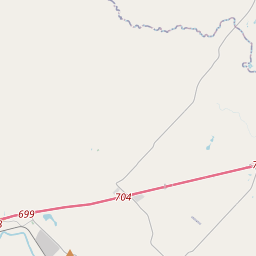Carl T. Morene: A Shorthorn Forever
Historical marker location:












Through his civic involvement and interest in young people, Carl T. Morene made lasting contributions to the quality of life in his adopted hometown of Schulenburg. Born in nearby Muldoon on November 13, 1887 to Swedish immigrant parents, he served in the Navy and and the Army before embarking on a career in utility management. He worked for the Central Power & Light Company in Gonzales, and in 1928 he came to Schulenburg to manage the utility's operations here. Morene was active in civic service, and in 1933, when school officials could no longer afford a paid music teacher, he volunteered to lead the program. The origins of his musical talents are unknown, but he proved to be an effective and motivational leader. Following his workday, he instructed students in music at his office. He also used his own money to pay for instruments and sheet music, and during World War II he used his gasoline ration card to ensure all students would have transportation to practice sessions and performances. Despite the lack of a high school education, Morene received a state teaching certificate in 1934. A bachelor, he selflessly devoted his time and energies to help young people learn and appreciate music. His efforts paid off as the Schulenburg program garnered many recognitions and awards for excellence. Under Morene's direction, the school orchestra performed regularly at school assemblies. In honor of the pride and spirit he observed among the Shorthorns of Schulenburg High, he wrote the official school song, Shorthorns Forever. Morene continued as the city's beloved music man until his death in January 1948. A large crowd of appreciate citizens and former students mourned his passing. (2005)
As one of the most visible programs of the Texas Historical Commission (THC), historical markers commemorate diverse topics in Texas history, including: the history and architecture of houses, commercial and public buildings, religious congregations, and military sites; events that changed the course of local and state history; and individuals who have made lasting contributions to the state, community organizations, and businesses.
More history nearby
Texas is also home to the world's largest honky-tonk, Billy Bob's Texas in Fort Worth. The venue covers three acres and can hold up to 6,000 people.
The establishment of Anglo-American settlements in Fayette County started in the 1820s under Stephen F. Austin's colony. The town of La Grange, which would become the county seat, was founded in 1826 and named after the ancestral home of General Lafayette. Over the next few decades, more pioneers arrived, attracted by the fertile soil and opportunities for farming and ranching. German immigrants, in particular, played a significant role in the county's development, establishing thriving communities and introducing their agricultural practices.
During the mid-19th century, Fayette County became embroiled in the turmoil of the Texas Revolution and the Civil War. The Battle of Fayetteville, fought in 1836, marked a significant event in the struggle for Texas independence. Confederate soldiers from Fayette County fought in various battles during the Civil War, including the Battle of Galveston and the Battle of Sabine Pass.
In the late 19th and early 20th centuries, Fayette County experienced economic growth and cultural diversification. Railroads connected the county to larger markets, stimulating trade and commerce. The discovery of oil and gas reserves further bolstered the local economy. Today, Fayette County is known for its agricultural industry, with crops like cotton and corn, as well as cattle ranching. It also attracts tourists with its historical sites, including the Monument Hill and Kreische Brewery State Historic Sites, which commemorate important moments in the county's history.
Fayette County Timeline
This timeline provides a condensed summary of the historical journey of Fayette County, Texas.
- 1837 – Fayette County is established as one of the original counties of the Republic of Texas.
- 1838 – The permanent county seat is established in La Grange.
- 1861-1865 – Fayette County residents actively participate in the Civil War.
- 1873 – The railroad reaches Fayette County, spurring economic growth.
- 1901 – The first oil well is drilled in the county, leading to the discovery of the West Point Oil Field.
- 1905 – The monumental Fayette County Courthouse is built.
- 1950s-1970s – Fayette County experiences an agricultural boom due to the construction of the Fayette Power Project and Fayette Nuclear Plant.
- 1998 – Fayette County celebrates its 150th anniversary.
- 2011 – The historic town square in La Grange is added to the National Register of Historic Places.